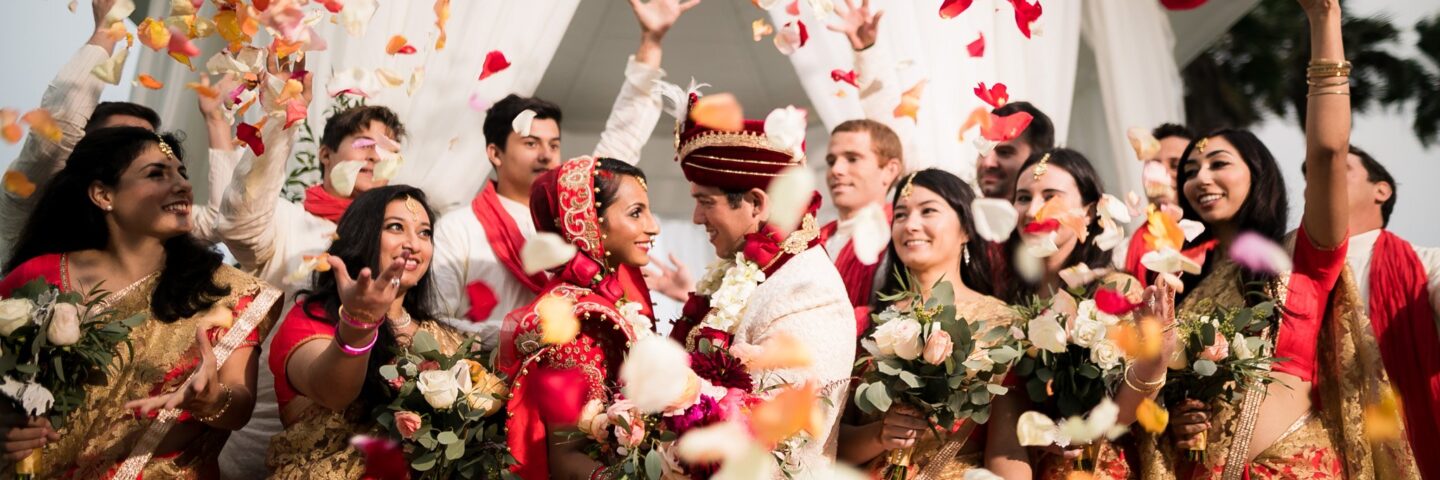Indian Wedding Traditions You’ll Want To Know
Posted on
By: Maya Hettleman
Featured Image By: Lin & Jirsa Photography
Over the decades at IMPACT Collective, we have become experts in all the celebrations of love. We have recently shared our must-know traditions for celebrating Jewish weddings. Today we would like to share some traditions for Indian weddings. Typically, traditional Indian weddings span multiple days and include many different rituals. Here at IMPACT, we have listed 5 traditions that occur during the wedding ceremony. We feel so fortunate to work in an area as diverse as the DMV and we cannot wait to continue celebrating with all of you through the year.
The Mandap
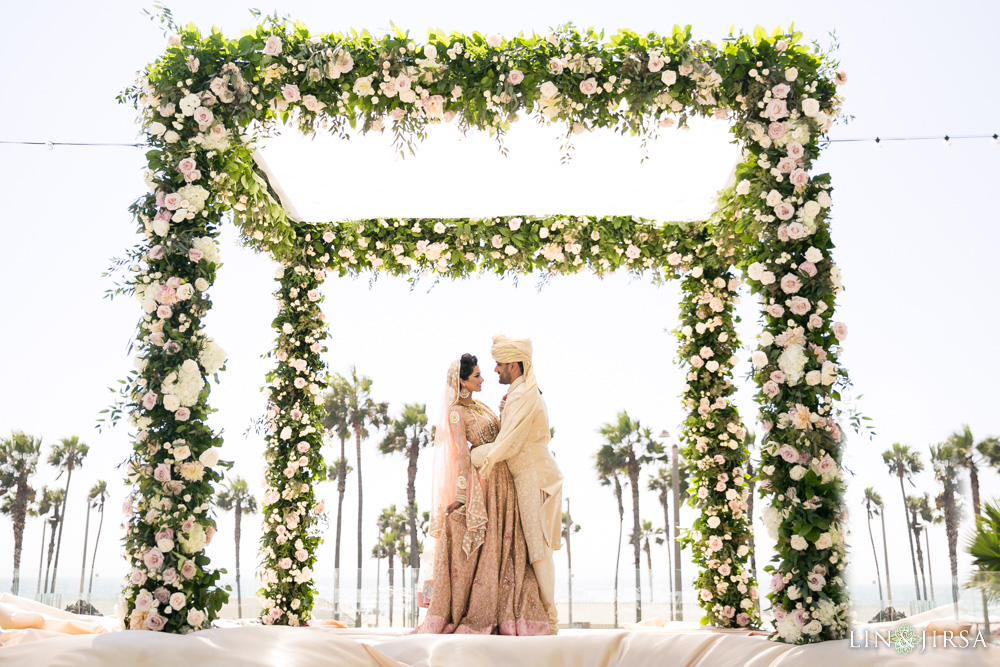
The Mandap (pronounced: mahn-duhp) is the center point of a traditional Indian wedding ceremony. It is where the rituals of an Indian wedding take place and where the bride and groom are joined by their parents and the wedding officiant. The mandap is an open structure with four pillars and an uncovered roof — it is heavily and brightly decorated with flowers and fabrics to match the style of the rest of the wedding. The four pillars represent the parents of the bride and groom and the support, love, and blessings that have allowed the wedding day to come to fruition.
The Sangeet and Mehndi Ceremonies
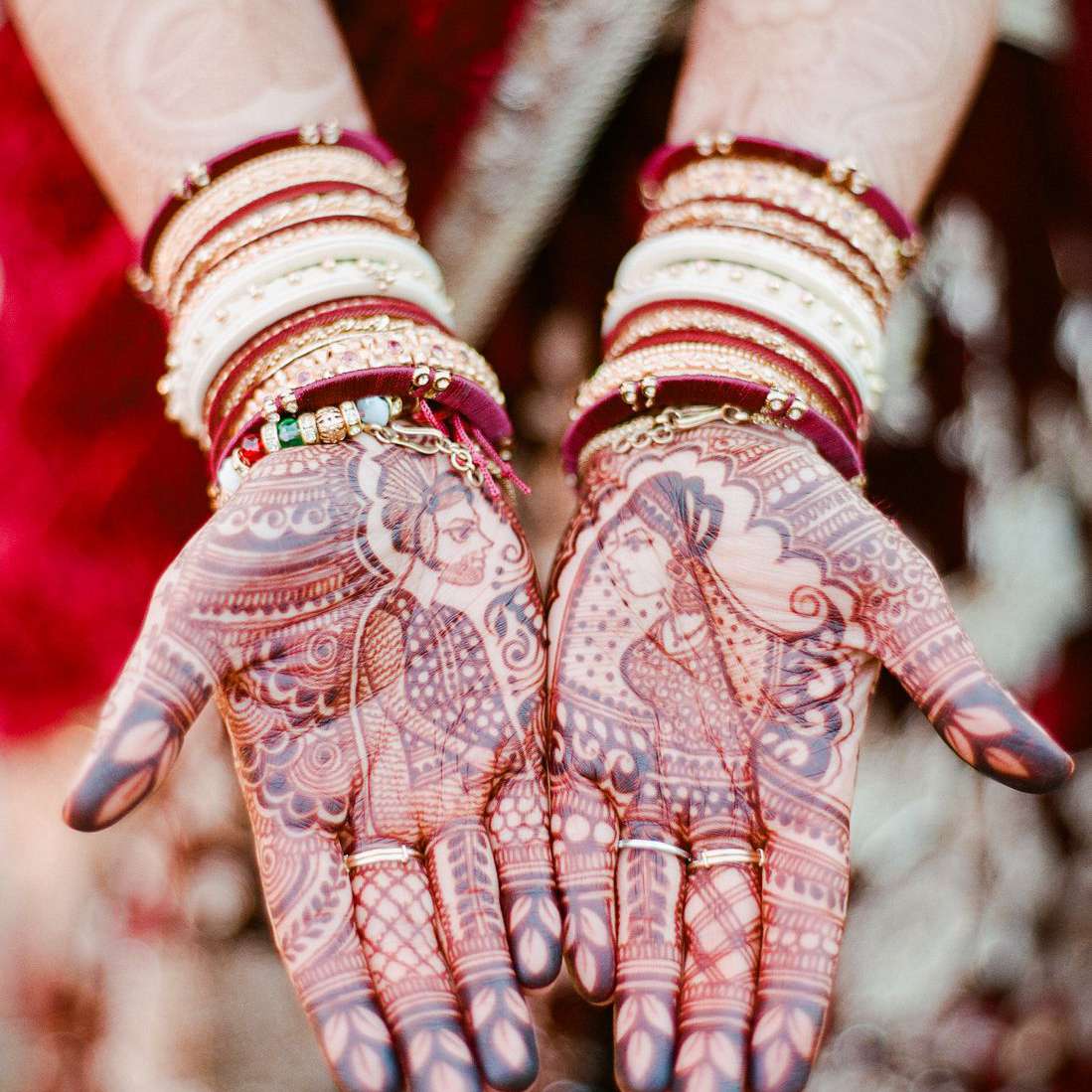
During one of the days of celebration leading up to the wedding ceremony, the bride hosts the Sangeet (pronounced: sun-geeth) which is a gathering during which the bride and groom’s families congregate and get to know each other. The sangeet is traditionally hosted at the bride’s house. During the sangeet, the bride, her female friends and family will partake in the mehndi (pronounced: men-dee) which is when henna patterns are applied to the bride’s arms, hands, and feet. It is believed that the darker the henna is on the skin, the stronger the marriage will be. Because of this, many Indian brides will let their hennas dry for over eight hours. It is also a tradition for the henna artist to hide the bride and groom’s names within the henna design. The groom taking the time to find his and his wife’s names represents the patience that is built in a strong marriage.
The Red/Pink Sari
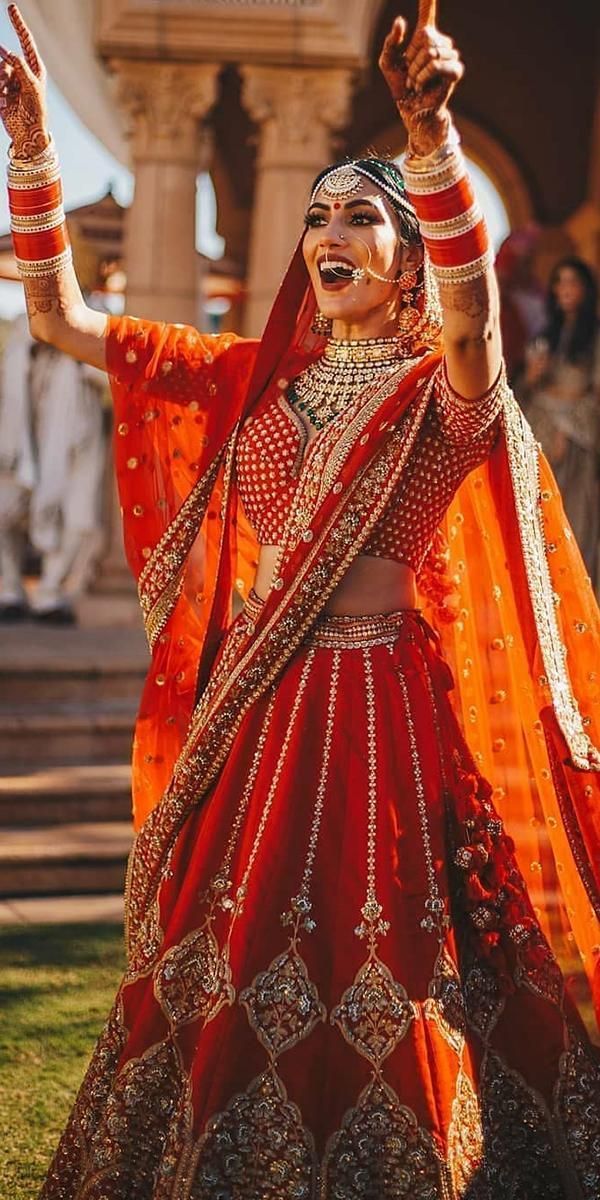
On the day of the wedding ceremony, the bride wears a sari (pronounced: sah-ree), which is a traditional three-piece garment that consists of a fitted bodice, a petticoat, and a long veil of fabric that is wrapped around her waist and draped over the shoulder. The fabric is heavily decorated with ornate stitching and is traditionally colored either red or pink, both of which symbolize happiness and luck in Indian tradition.
The Groom’s Entrance
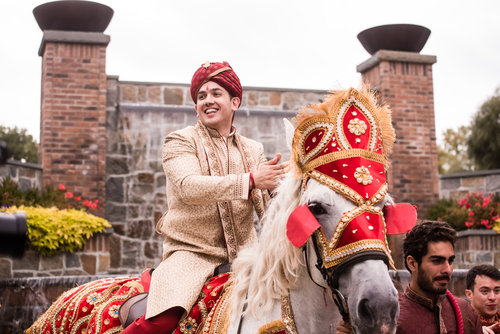
The groom’s entrance to the wedding ceremony is called the baraat (pronounced: bah-rah-t). This procession involves live music and dancing as the groom approaches the wedding party at the ceremony’s venue. The groom wears traditional Indian wedding clothing including an extended long shirt called a kafni (pronounced: kah-f-nee), pijamo (pronounced: pi-jah-moh) leggings and an optional turban. The groom, on horseback, is led by dancing guests to his future in-laws before the ceremony officially begins.
The Saptapadi
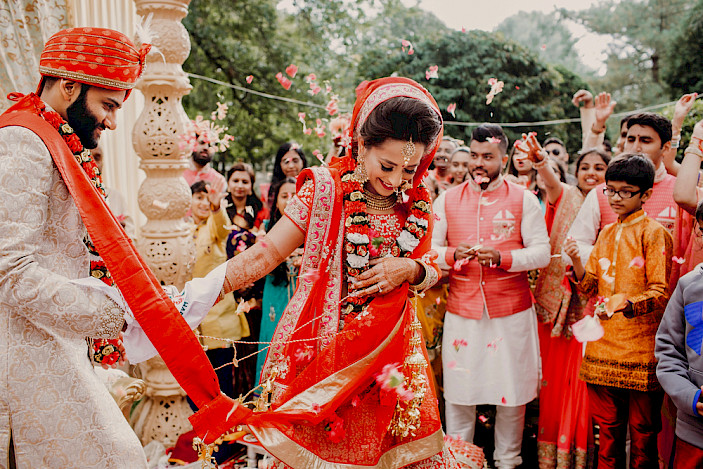
The saptapadi (pronounced: sup-tahp-dhi) is a wedding ritual that can be found in many North Indian Hindu weddings. A piece of the bride’s wedding attire is knotted with something of the groom’s clothing. Usually, the bride’s veil and the groom’s sash are tied together. This Northern Indian tradition continues with the bride and groom walking in seven circles around a ceremonial fire in the middle of their mandap while in Southern Indian tradition the couple walks seven steps together. Each of the seven steps or circles represent blessings to different gods. Most importantly the knotting of clothing during the saptapadi represents the establishment of a strong, unified friendship — which is the basis of a Hindu marriage.
We hope this list gives you more insight into the beautiful rituals that take place at a traditional Indian wedding. At IMPACT Collective, it is our greatest goal to create an environment where our couples can feel represented across their customs with their love stories. If there is a style of wedding or series of customs you would like to learn more about, please let us know on our Instagram, @impact_collective! If you’re looking for the perfect planners for your upcoming wedding, click here to set up a consultation with us to learn about all the services we offer.
